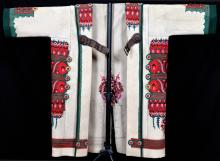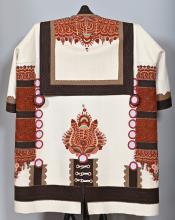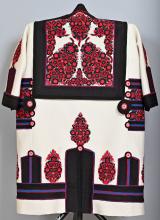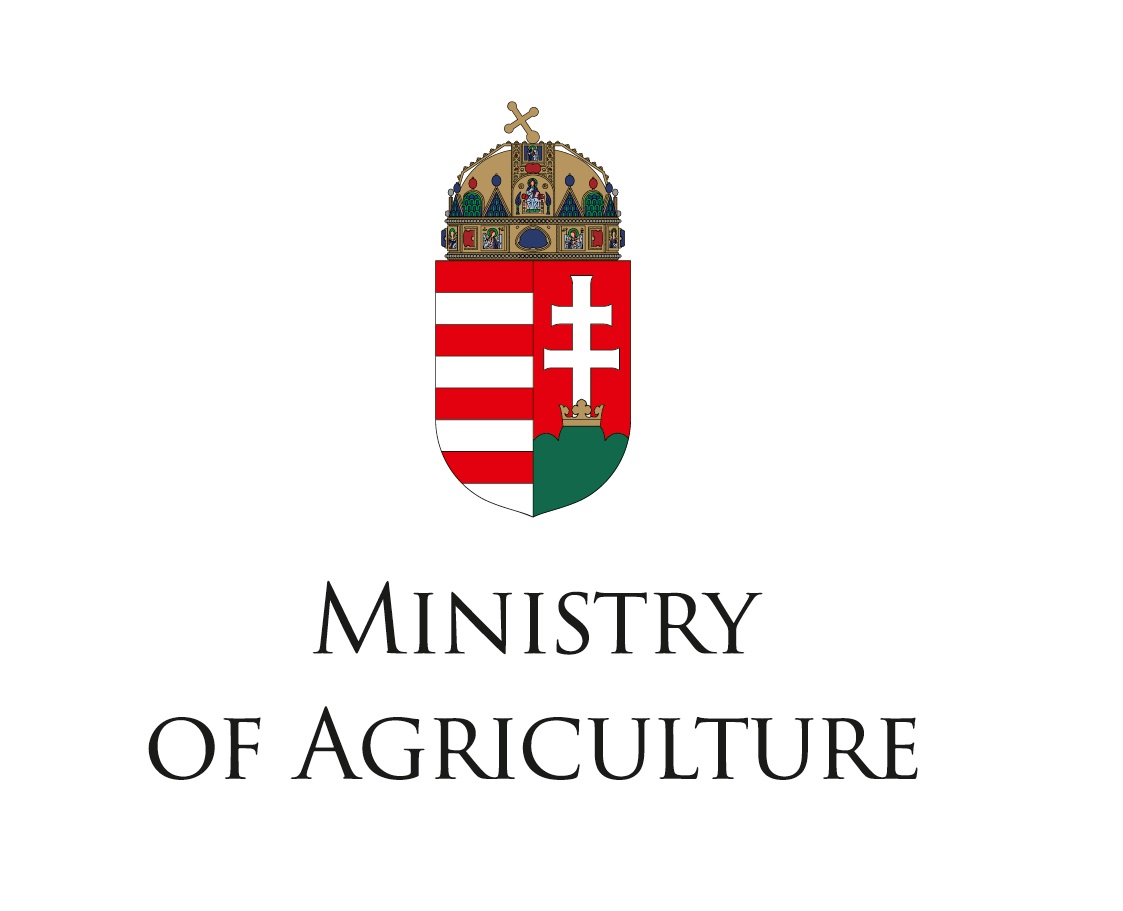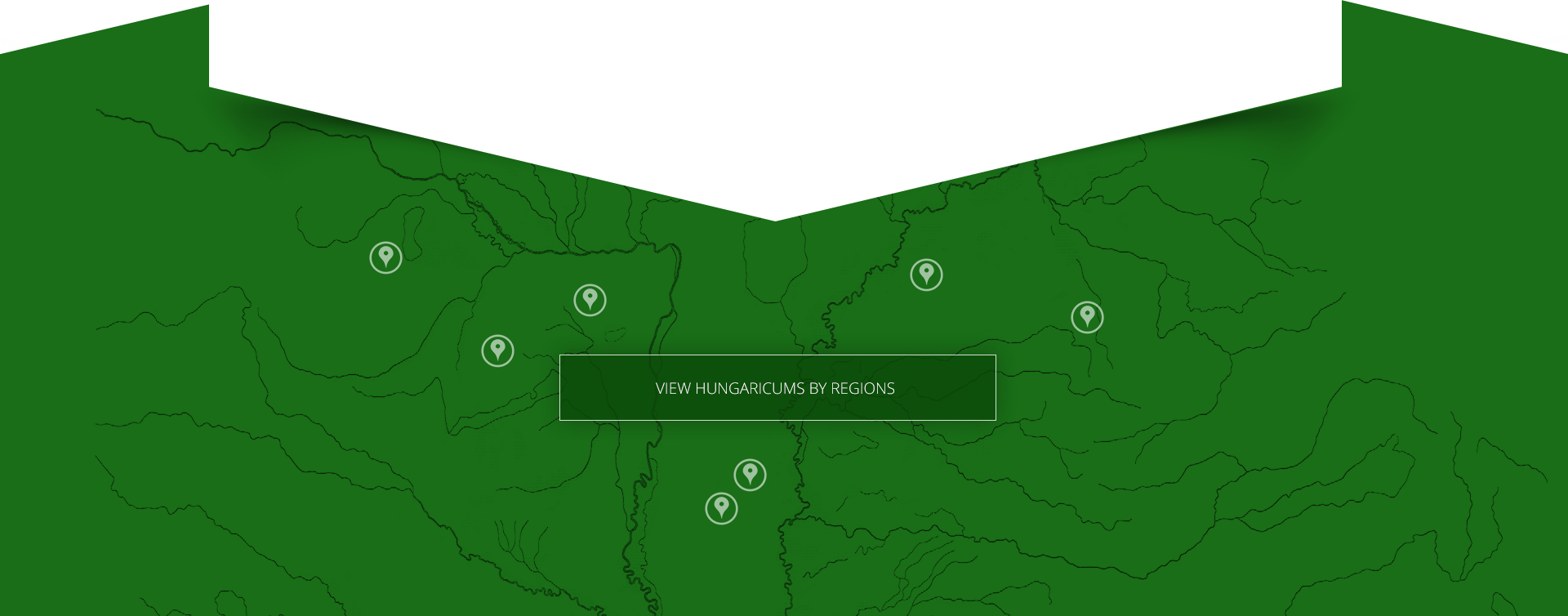Hungarian Frieze Coat ("Cifraszűr”)
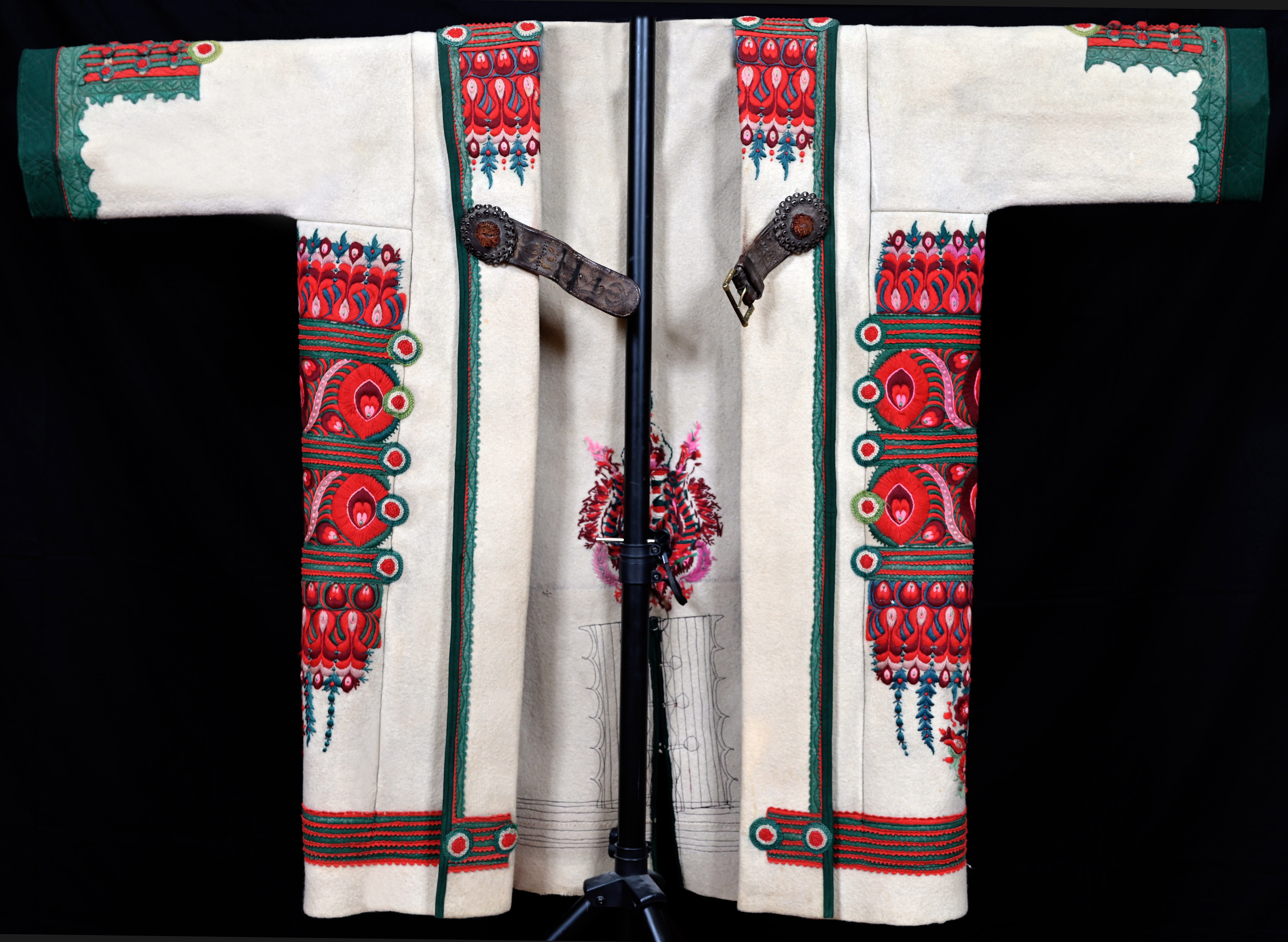
Short description:
Presumably in the Middle Ages the Hungarian word "szűr” was standing for a gray wool which was the raw material of clothes for common people and monks. This wool was also used for sewing haversacks, and capes. The "cifraszűr” is not only a representative Hungarian traditional folk costume, but also a national symbol. During the 19. century it was reborn, became more decorated, literally "flourished”. Until the end of the 19. century, this costume captivated the whole Carpathian Basin spreading from the west. Moreover it became part of the peasants culture. "Cifraszűr” became obligatory wedding wear for grooms, even in some places lads had to wear it when courting at their significant girl’s family’s house. Habitually the lad left his embroidered coat at his courting location. If his coat was hanging up on the porch by the next morning, it meant he had to search for an another girl to court. The, "szűr” was carrying in itself the art of folk decoration, and also appeared in other fields of folk art (for example: woodcarving, decoration of instruments, utility objects). In addition it is present in ballads, folk songs.
Details:
Javaslat a nemzeti érték Hungarikumok Gyűjteményébe történő felvételéhez.
Az érték a Hungarikum törvény 324/2020. (VII. 1.) Kormányrendelet a magyar nemzeti értékek és hungarikumok értéktárba való felvételéről és az értéktár bizottságok munkájának szabályozásáról mellékletének Hungarikum Bizottsághoz történő felterjesztésével és elbírálása által került a Hungarikumok Gyűjteményébe.
Tags: cifraszűr, magyar cifraszűr


